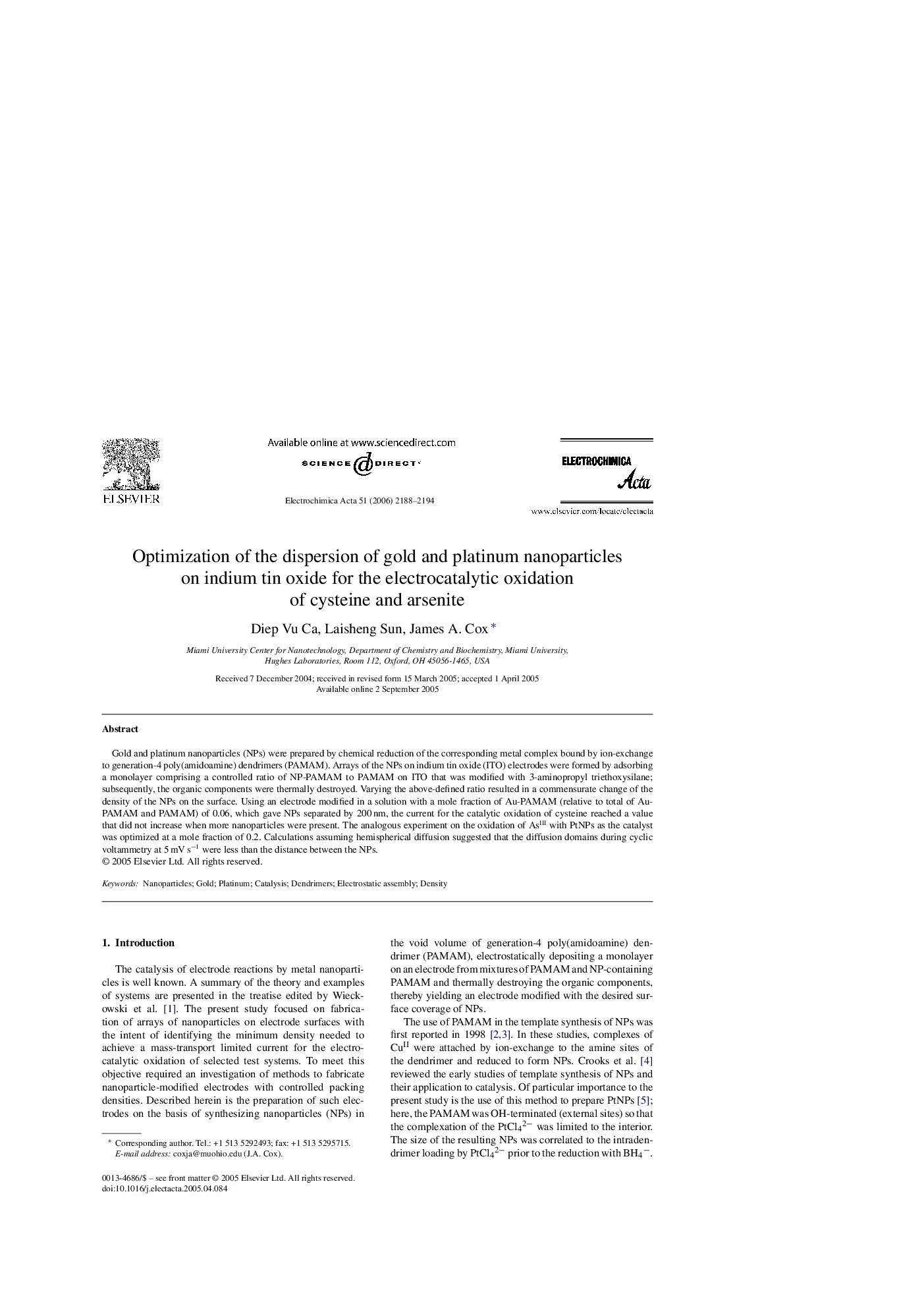| کد مقاله | کد نشریه | سال انتشار | مقاله انگلیسی | نسخه تمام متن |
|---|---|---|---|---|
| 195670 | 459819 | 2006 | 7 صفحه PDF | دانلود رایگان |

Gold and platinum nanoparticles (NPs) were prepared by chemical reduction of the corresponding metal complex bound by ion-exchange to generation-4 poly(amidoamine) dendrimers (PAMAM). Arrays of the NPs on indium tin oxide (ITO) electrodes were formed by adsorbing a monolayer comprising a controlled ratio of NP-PAMAM to PAMAM on ITO that was modified with 3-aminopropyl triethoxysilane; subsequently, the organic components were thermally destroyed. Varying the above-defined ratio resulted in a commensurate change of the density of the NPs on the surface. Using an electrode modified in a solution with a mole fraction of Au-PAMAM (relative to total of Au-PAMAM and PAMAM) of 0.06, which gave NPs separated by 200 nm, the current for the catalytic oxidation of cysteine reached a value that did not increase when more nanoparticles were present. The analogous experiment on the oxidation of AsIII with PtNPs as the catalyst was optimized at a mole fraction of 0.2. Calculations assuming hemispherical diffusion suggested that the diffusion domains during cyclic voltammetry at 5 mV s−1 were less than the distance between the NPs.
Journal: Electrochimica Acta - Volume 51, Issue 11, 15 February 2006, Pages 2188–2194